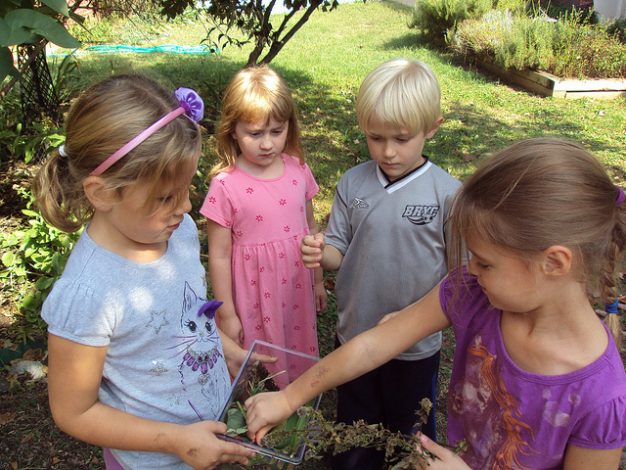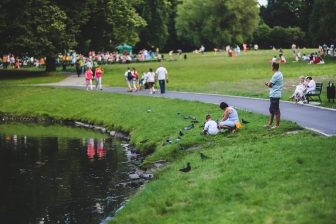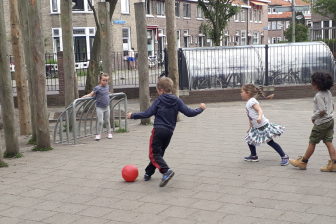
Green schoolyards boost children’s health and learning
‘Healthy School Yards’ is a Dutch sustainability programme to encourage children’s engagement with nature, which has a positive impact on their social, academic and physical health. The project ‘Healthy School Yards’ was introduced to schools in the Netherlands in 2013, with the aim to develop 70 ‘Healthy School Yards’ within three years. The program has been designed to assist local primary, secondary and vocational schools.
Promoting outdoor play
Childcare professionals advocate transforming school grounds into healthy and green spaces, which can enrich the daily lives of children and their communities and diversify children’s outdoor experience.
“There is a growing concern about childhood obesity”, said Marielle Versteeg, the Project Manager from Jantje Beton, the long-standing Dutch society to encourage outdoor activities for children. “It presents serious health risks to children, including heart disease, diabetes, and social and psychological problems. What makes the situation worse is that children spend more time viewing television, using computers and playing video games than they do being physically active outside. In spite of economically challenging times, the Dutch government has decided to invest in this type of preventive method to promote physical activity and outdoors play.”
Children’s participation essential
However, these schoolyards are more than just playgrounds. They include space for physical activity, such as turf fields, jogging tracks, basketball and tennis courts, and age-appropriate play equipment. The grounds also feature areas for learning and exploration, such as outdoor classrooms, native trees and plants, vegetable gardens and art installations.
Literature suggests that schoolyards are places where collaborative environmental action leads to clear, positive results that build children’s confidence in the power of working together—sending messages of optimism and hope to children and adults alike.
“Schoolyards offer the pupils the opportunity to be highly mobile and to play in a stimulating, green and smoke-free environment. However, to achieve high engagement, children need to be invited to participate in their creation. Therefore, our goal is not only to create a physical setting in which pupils are encouraged to engage in healthy activity but also for children to relate to the school grounds by being part of the design process,” explained Versteeg. “The project thus achieves two objectives simultaneously: the creation of a physically attractive schoolyard, and a gradually growing awareness among pupils of their own behaviour. Allowing children to work together helps them to discover and understand relationships,” she said
Jantje Beton has worked with primary and secondary schools to develop various approaches, work methods and workshops to ensure that children and young people have a prominent role in the creation process. Versteeg says “For example, the Fllenoord School has received 50,000 Euro from Jantje Beton to re-design their schoolyard. This yard has a more structured character, includes more grey and green – and not just green –elements.”
“Inspired by Keri Smith’s “Wreck this journal” we developed a ‘Do-book’, in which children are encouraged through playful assignments to express their ideas. Also, the ‘Schoolyard Action Team’ uses several methods to work towards a definitive choice for a particular design,” she concluded.




